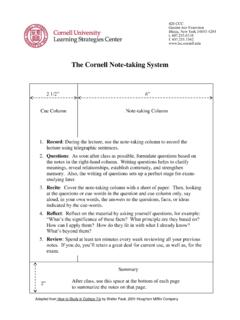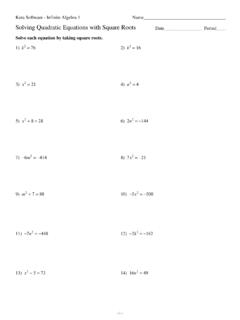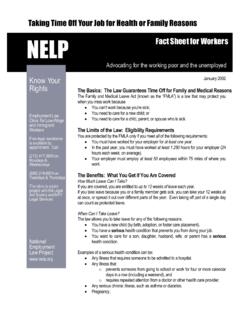Transcription of The Cornell Note-taking System
1 Adapted from How to Study in College 7/e by Walter Pauk, 2001 Houghton Mifflin Company The Cornell Note-taking System 2 1/2 6 2 Note-taking Column Cue Column Summary After class, use this space at the bottom of each page to summarize the notes on that page. 1. Record: During the lecture, use the Note-taking column to record the lecture using telegraphic sentences. 2. Questions: As soon after class as possible, formulate questions based on the notes in the right-hand column. Writing questions helps to clarify meanings, reveal relationships, establish continuity, and strengthen memory. Also, the writing of questions sets up a perfect stage for exam-studying later. 3. Recite: Cover the Note-taking column with a sheet of paper. Then, looking at the questions or cue-words in the question and cue column only, say aloud, in your own words, the answers to the questions, facts, or ideas indicated by the cue-words.
2 4. Reflect: Reflect on the material by asking yourself questions, for example: What s the significance of these facts? What principle are they based on? How can I apply them? How do they fit in with what I already know? What s beyond them? 5. Review: Spend at least ten minutes every week reviewing all your previous notes . If you do, you ll retain a great deal for current use, as well as, for the exam. 420 CCC Garden Ave Extension Ithaca, New York 14853-4203 t. f.










